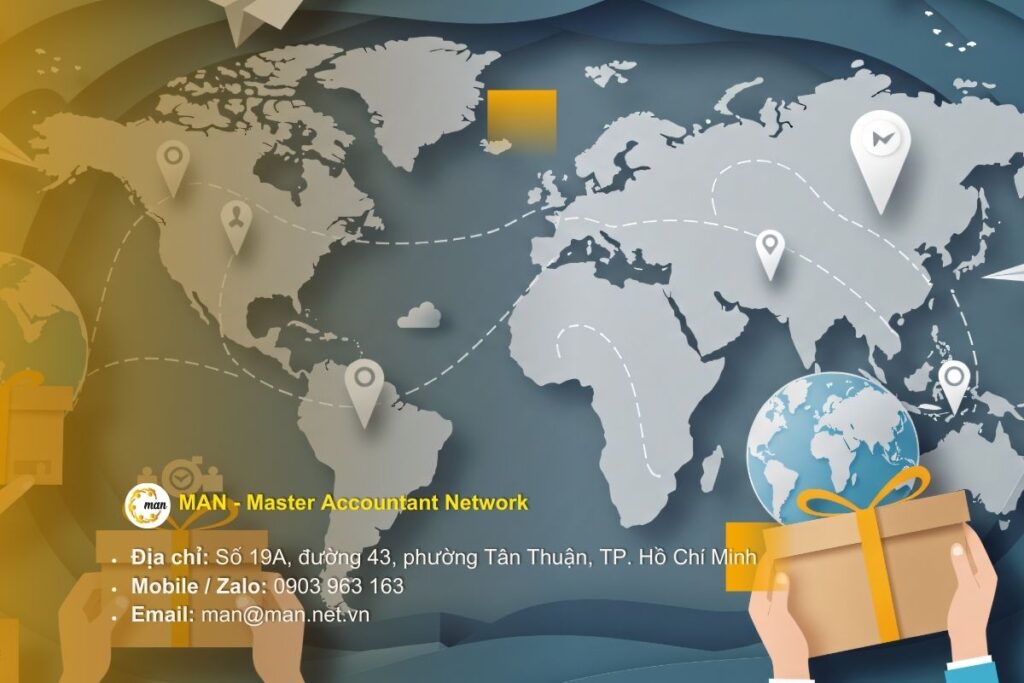Optimizing interest expense on GDLK loans is a key factor to help businesses reduce financial costs, improve business efficiency and limit the risk of tax arrears. According to Online Customs reportThe tax sector has inspected and examined 920 enterprises with related party transactions, with the total amount of arrears, refunds and penalties reaching VND 1,807 billion. Of which, arrears due to adjustment of related party transaction prices is VND 710 billion, and loss reduction due to adjustment of related party transaction prices is VND 4,047 billion.
Applying the group's internal loan structure, preparing detailed related-party transaction loan interest records and strictly controlling tax risks not only helps enterprises comply with Vietnamese tax laws on related-party loan interest, but also makes internal financial transactions transparent. This is an important foundation for enterprises to manage costs, optimize loan interest and ensure transparency with tax authorities.
Concept and role of interest in related party transactions
What is related party transaction interest?
Interest on related-party transactions is the expense arising from borrowing transactions between parent companies, subsidiaries and branches within the same group, within the scope of intercompany loan management. This is an important part of the financial transaction structure within the group, helping to allocate capital effectively, ensure operating cash flow and record reasonable costs between subsidiaries, branches and parent companies. Determining appropriate interest rates according to market reality and complying with the arm's length principle is the basis for proving the reasonableness of financial costs when tax authorities inspect.
Intercompany loan management needs to be linked with Transaction structure in related party transactions to optimize costs and allocate capital reasonably, helping businesses to be transparent in internal transactions and reduce tax risks.
Why is it necessary to optimize GDLK interest costs?
Optimizing the cost of GDLK interest not only helps businesses reduce financial costs but also ensures compliance with Vietnamese tax laws on related interest. When applying reasonable internal borrowing strategies, businesses can effectively allocate interest costs among companies in the group, avoid wasting resources and reduce the risk of tax adjustments. At the same time, optimizing group financial costs also supports the transparency of inter-company transactions, creating a solid foundation for financial reports and tax audit records.
Systematically planning, monitoring and evaluating interest expenses helps businesses balance capital sources, improve capital efficiency and enhance overall financial management capacity within the group.
Factors affecting interest expenses in GDLK

Internal group loan structure
The internal loan structure between the parent company, subsidiaries and branches is a key factor in determining the interest expense in related-party transactions. The allocation of interest rates, limits and loan terms should be reasonably designed to optimize the overall financial costs of the group. An optimal loan structure helps businesses minimize unnecessary interest expenses, while ensuring that subsidiaries have sufficient operating capital, increasing capital management efficiency and transparently allocating interest expenses within the group.
Tax and legal policies
Associated interest expenses are directly governed by current legal and tax regulations. Enterprises need to comply with Vietnamese tax laws on associated interest, and control tax risks to avoid cost adjustments or additional tax collection. Some important legal regulations include:
Law on Tax Administration 2019 (amended and supplemented in 2020): stipulates the obligation to declare, prepare documents and explain interest expenses of related-party transactions.
Circular 132/2020/TT-BTC provides guidance on tax management for related-party transactions, including determining interest expenses.
Circular 96/2015/TT-BTC provides guidance on preparing transfer pricing documents, including instructions on methods for determining inter-company transaction interest rates.
OECD Transfer Pricing Guidelines 2022: provides principles for determining arm's length interest rate and transparency of intercompany borrowing.
Correct application of these regulations not only helps businesses comply with the law but also increases the ability to optimize interest costs.GDLK, while minimizing risks when tax authorities inspect and audit.
Intercompany loan records and management
Related transaction interest profile

To effectively manage interest on related-party transactions, enterprises need to prepare a complete dossier, including loan contracts, interest valuation methods and related payment documents. This dossier plays an important role in explaining interest on related-party transactions to tax authorities, proving that interest expenses are determined correctly according to the arm's length principle and in accordance with legal regulations. A detailed dossier not only helps reduce the risk of adjusting interest expenses but also helps enterprises to make internal financial transactions transparent and strengthen cost control within the group.
Cost control and allocation
Effective intercompany loan management requires businesses to use intercompany loan control tools to monitor cash flow and costs incurred. At the same time, the allocation of loan costs within the group needs to be carried out reasonably among subsidiaries and branches, based on the loan structure and actual capital needs. This process helps to optimize overall financial costs, ensure stable operating capital and maintain transparency in related transactions.
GDLK interest cost optimization strategy
Loan structure analysis and interest rate selection
To optimize the cost of intercompany loans, enterprises need to choose an appropriate loan structure, including internal loans between the parent company and subsidiaries, loans from banks or loans from foreign parent companies. A detailed analysis of the loan structure helps determine which source of capital is most cost-effective and risk-free. At the same time, adjusting interest rates according to the arm's length principle ensures that interest costs are properly recorded and comply with Vietnamese tax laws on intercompany loans, thereby avoiding adjustments or collection when tax authorities inspect. In fact, many multinational corporations have restructured internal loans, adjusting interest rates according to the market to reduce average interest costs by about 0.5-1% on total outstanding intercompany loans, bringing significant financial benefits.
Tax Risk Control
An optimal strategy cannot be without fully explaining the interest expense of GDLK to the tax authorities. Enterprises need to regularly review documents, including loan contracts, interest valuation methods and payment documents, to avoid the risk of tax arrears or penalties. In recent inspections, many FDI enterprises have minimized risks by preparing detailed interest documents, clearly showing the basis for determining interest rates and allocating costs among subsidiaries.
Tools and support software
For effective management, many corporations have applied tools to support inter-company interest control, including group financial management software, which helps track interest, prepare reports and automatically allocate costs. These tools not only help optimize group financial costs but also increase transparency, reduce manual errors and support accountability when requested by tax authorities. For example, some large corporations use ERP software that integrates interest management modules, which helps reduce checking time and increase data accuracy up to 95%.
Common risks and precautions
In the process of managing intercompany loans, businesses often encounter some common risks. Errors in loan documentation, such as missing contracts, inappropriate loan valuation methods or incomplete payment documents, can lead to tax authorities adjusting costs or collecting additional taxes.
In addition, unreasonable loan structure between parent company, subsidiaries and branches, and failure to properly apply the arm's length principle, also increases the risk of interest rate adjustments and related costs.
Therefore, businesses need to pay special attention to internal control, including periodic reviews of loan structures, pricing methods and payment records. At the same time, regularly updating inter-company loan interest records helps reduce tax risks, make internal transactions transparent and ensure that loan interest expenses are recorded appropriately and in accordance with legal regulations.
Conclusion and recommendations
Optimizing interest expense on related-party loans plays a key role in reducing financial costs and managing tax risks for businesses. A reasonable loan structure, combined with a complete and transparent interest profile, helps businesses control cash flow, allocate costs reasonably among subsidiaries and branches, and comply with Vietnamese tax laws on related-party loans.
To achieve optimal efficiency, enterprises should combine the internal group loan structure, create detailed and regularly updated loan interest records, and apply financial management tools to support inter-company loan interest management and optimize group financial costs. This not only ensures compliance with the law but also improves accountability to tax authorities, reducing the risk of tax arrears or penalties.
Contact information MAN – Master Accountant Network
- Address: No. 19A, Street 43, Tan Thuan Ward, Ho Chi Minh City
- Mobile / Zalo: 0903 963 163 – 0903 428 622
- E-mail: man@man.net.vn
MAN Editorial Board – Master Accountant Network




